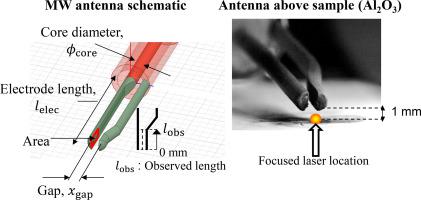当前位置:
X-MOL 学术
›
Spectrochim. Acta B. At. Spectrosc.
›
论文详情
Our official English website, www.x-mol.net, welcomes your feedback! (Note: you will need to create a separate account there.)
Development of microwave-enhanced fibre-coupled laser-induced breakdown spectroscopy for nuclear debris screening at Fukushima
Spectrochimica Acta Part B: Atomic Spectroscopy ( IF 3.3 ) Pub Date : 2020-09-01 , DOI: 10.1016/j.sab.2020.105933 Yuji Ikeda , Joseph Ampadu Ofosu , Ikuo Wakaida
Spectrochimica Acta Part B: Atomic Spectroscopy ( IF 3.3 ) Pub Date : 2020-09-01 , DOI: 10.1016/j.sab.2020.105933 Yuji Ikeda , Joseph Ampadu Ofosu , Ikuo Wakaida

|
Abstract Remote sensing is indispensable to decommissioning the post-accident Fukushima Daiichi nuclear power station set to begin in 2021. High radiation levels make containment and reactor vessels inaccessible. Fibre-coupled Laser-induced breakdown spectroscopy (FC-LIBS), with a 50-m long, 800 μm diameter fibre-optic cable has been considered for the pre-analysis of nuclear fuel debris, prior to their processing and secure transport for storage and disposal. Coupling and transmission losses, and radiation effect on fibre core leads to signal deterioration. We present the enhancement of spectral intensity by superposing a 2.45 GHz semiconductor oscillated microwaves (MW) to the induced plasma of FC-LIBS system. The prototype fibre cable used was 1 m long and 800 μm in diameter. Test material for the study was standard aluminium oxide, and a 30 mJ laser output was for seed plasma generation. Using MW energy of 190 mJ per pulse, intensity enhancement of about 1160 times the level of FC-LIBS was achieved. This demonstrates the capability of MW-enhanced FC-LIBS for elemental analysis necessary for screening nuclear fuel debris.
中文翻译:

用于福岛核碎片筛查的微波增强光纤耦合激光诱导击穿光谱的发展
摘要 遥感对于将于 2021 年开始的福岛第一核电站事故后退役必不可少。高辐射水平使安全壳和反应堆容器无法进入。光纤耦合激光诱导击穿光谱 (FC-LIBS) 具有 50 米长、800 微米直径的光纤电缆,已被考虑用于核燃料碎片的预分析,然后再进行处理和安全运输储存和处置。耦合和传输损耗,以及对纤芯的辐射效应导致信号恶化。我们通过将 2.45 GHz 半导体振荡微波 (MW) 叠加到 FC-LIBS 系统的诱导等离子体来增强光谱强度。使用的原型光缆长 1 m,直径 800 μm。该研究的测试材料是标准氧化铝,30 mJ 激光输出用于产生种子等离子体。使用每脉冲 190 mJ 的 MW 能量,强度增强约为 FC-LIBS 水平的 1160 倍。这证明了 MW 增强型 FC-LIBS 具有筛选核燃料碎片所需的元素分析能力。
更新日期:2020-09-01
中文翻译:

用于福岛核碎片筛查的微波增强光纤耦合激光诱导击穿光谱的发展
摘要 遥感对于将于 2021 年开始的福岛第一核电站事故后退役必不可少。高辐射水平使安全壳和反应堆容器无法进入。光纤耦合激光诱导击穿光谱 (FC-LIBS) 具有 50 米长、800 微米直径的光纤电缆,已被考虑用于核燃料碎片的预分析,然后再进行处理和安全运输储存和处置。耦合和传输损耗,以及对纤芯的辐射效应导致信号恶化。我们通过将 2.45 GHz 半导体振荡微波 (MW) 叠加到 FC-LIBS 系统的诱导等离子体来增强光谱强度。使用的原型光缆长 1 m,直径 800 μm。该研究的测试材料是标准氧化铝,30 mJ 激光输出用于产生种子等离子体。使用每脉冲 190 mJ 的 MW 能量,强度增强约为 FC-LIBS 水平的 1160 倍。这证明了 MW 增强型 FC-LIBS 具有筛选核燃料碎片所需的元素分析能力。



























 京公网安备 11010802027423号
京公网安备 11010802027423号